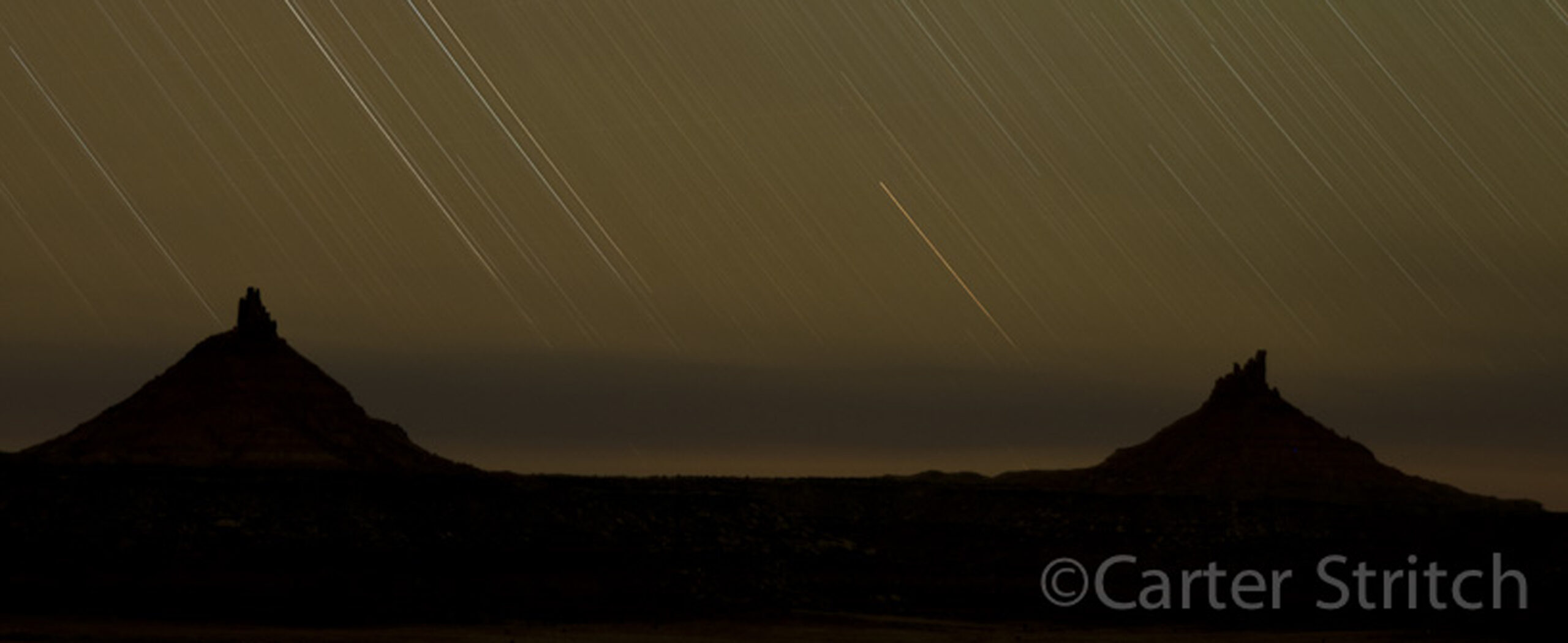You stand at the base of El Capitan in Yosemite National Park, staring up at the glaringly massive rock wall. You can barely see the peak of the 3,000 foot mammoth. You check your gear onelast time and attack the creviced face. This is how Minnehaha alumni Carter Stritch (’04) spends his free time: climbing some of the country’s major rock formations and photographing it all along the way.
The fascination began at Wayzata junior high when his sixth grade class raised so much money that the school purchased a climbing wall. Soon after Stritch’s friend invested in climbing equipment, and the pair began climbing near Taylor’s Falls, Minnesota.
He took his first photography class at Minnehaha, working with film in the dark room. From there, he went to Rochester Institute of Technology in New York, one of the best photo schools in the country. While he wasn’t a photo student, he involved himself in the photography community as much as he could.
“In college, [climbing] progressed quite a bit,” said Stritch. “I became the president of the outing club and we had a climbing wall on campus. We would go climbing in the Adirondack Mountains in northeastern New York and the White Mountains of New Hampshire.”
Fresh out of college Stritch took an eight month solo road trip across North America, where he spent two months climbing in Utah and then traveled to Yosemite and British Columbia.
Being an adventurous outdoors man carries over into his career as an engineer at Polaris. Photography is a hobby, but an impressive one at that.
Stritch says the best part of climbing is how close you get to people.
“You may only see them for a week, and you never see them again, but you get to know them really well,” said Stritch.
The pride of completing a climb certainly isn’t bad, either.
“It’s a sense of accomplishment,” said Stritch. “Getting to the top of the Grand Tetan [in Wyoming] after 20 hours of constant moving, and being able to share that with a good friend is a lot of fun.”
In order to capture the overwhelming sights and thrilling climbs, Stritch must first climb the route and then set up ropes.
“A lot of what I’ve taught myself is what to do on the ropes,” said Stritch. “And how to work my camera systems when I’m hanging 1,000 feet off the ground.”
Getting the perfect shot takes planning and sometimes the manipulation of models, whether it’s their pose or their outfits.
“I get a lot of friends that wear black or grays or whites,” said Stritch. “When you have gray on Yosemite granite, [you’re] just going to blend in. I was traveling around the west and I brought three different shirts of different colors in small, medium and large to give to people when they had horrible shirts on.”
While shooting during the day is more conventional, Stritch also shoots at night, photographing the night sky on a prolonged exposure. Because the camera is stationary and the earth is moving, the stars create rings called star trails.
“My ultimate photograph, which I’ve only really been fairly successful [with] once, is where I can incorporate a mountain, lit up by the moon, and put a climber on that with star trails in the background,” said Stritch. “I think it’s cool to bring it all together, but it takes a lot of work.”
Stritch says the most difficult part of this hobby is sifting through all the photos and digitally manipulating them.
“I try to do the least amount [of manipulation],” said Stritch. “[With] a good photograph, you don’t really have to do a whole a lot with it.”
Photography has forced Stritch to reevaluate the way he views things.
“I have a bad attitude about city lights and the amount of light pollution we put out there, but that makes me say, ‘Wow, light pollution is pretty.” said Stritch, talking about a photo that was completely illuminated by the light pollution of Vancouver.”That was a learning experience that from so far away, light can have such a big effect on your photo and you can actually use it in a way that is neat.”
As for the future, Strict hopes to expand his adventures into new countries.
“So far I’ve been doing things mainly in the U.S., and I’d like to take that other places,” said Stritch. “It might not be climbing. It could be a bicycle trip around Japan, or something in Europe, or a kayaking and climbing trip in Greenland.”
But Stritch hasn’t given up on his home state completely.
“I’m thinking about doing white water kayaking this spring up on the North Shore,” said Stritch. “It’ll totally be a learning curve. I don’t know how to kayak, so I have to learn how to do kayaking and how to do kayaking photography at the same time. That’ll be challenging and something brand new, so that’s what I’m looking for.”

